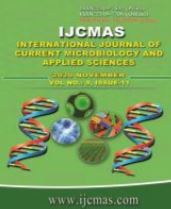


 National Academy of Agricultural Sciences (NAAS)
National Academy of Agricultural Sciences (NAAS)

|
PRINT ISSN : 2319-7692
Online ISSN : 2319-7706 Issues : 12 per year Publisher : Excellent Publishers Email : editorijcmas@gmail.com / submit@ijcmas.com Editor-in-chief: Dr.M.Prakash Index Copernicus ICV 2018: 95.39 NAAS RATING 2020: 5.38 |
Escalated food demands propelled by the ever increasing population demands for increase in crop production. But problems like labour shortages, high input costs and conventional farming practices makes agriculture economically unviable and resulted in its decline, especially in vulnerable communities of the developing world. Use of heavy machinery has been in the increase to tackle the problems of labour shortages but have adverse effects on environment due to soil compaction and the adverse effect on global warming owing to high fossil fuel use. Automation technologies in agriculture are promising for increasing productivity with greater precision and better economics. Agricultural robots can make a revolutionary change as they are able to perform most agricultural tasks effectively, both in field and protected environment resulting in higher crop productivity, reduced labour shortage and time saving. Current pandemic outbreak also necessitates the significance of automation for sustaining agricultural production systems. The wide applications of agricultural robots are restricted in developing countries, mainly due to their high cost and the development of an economically feasible agricultural robot will be a boon to small scale farmers. Hence suitable design concepts were evolved for a semi-autonomous robotic platform for intercultural operations in row crops. The various design aspects for chassis, drive mechanism, wireless control system, operational unit, and the hardware and software are conceived in consideration of the techno-economic background of the developing world.
 |
 |
 |
 |
 |